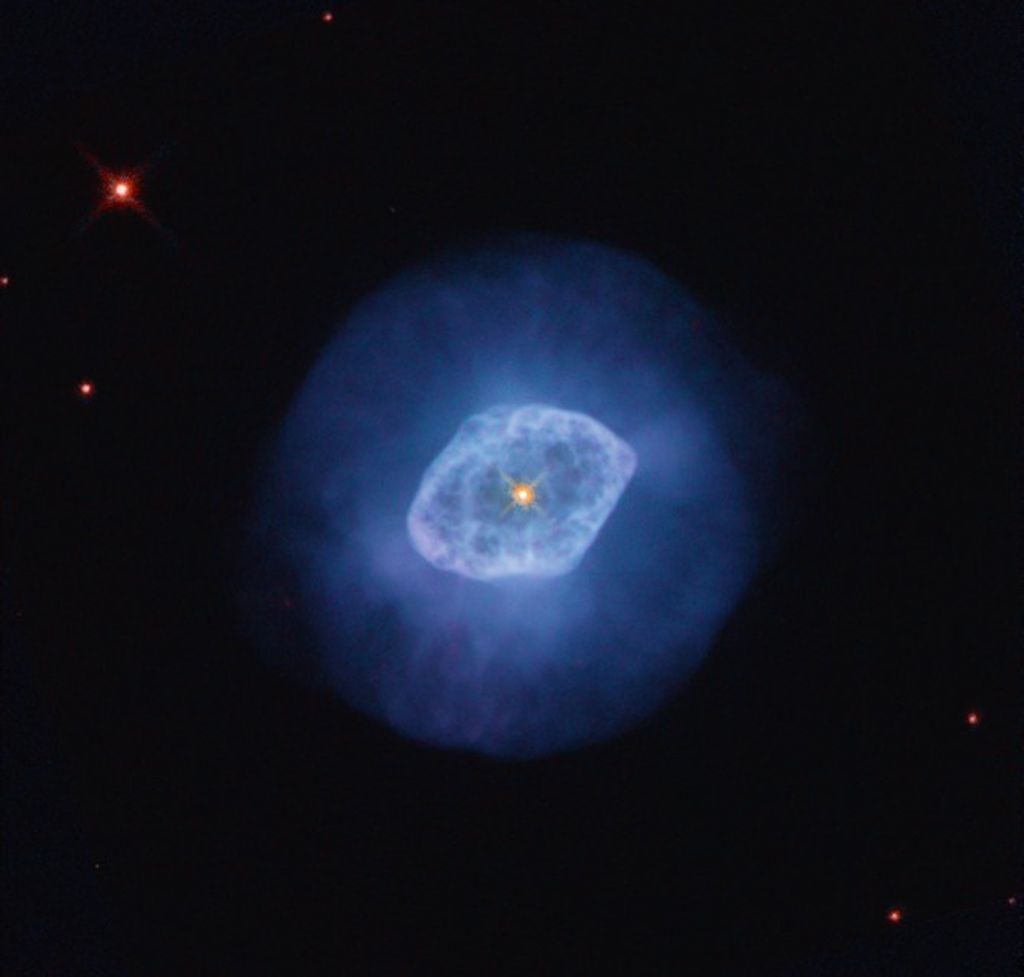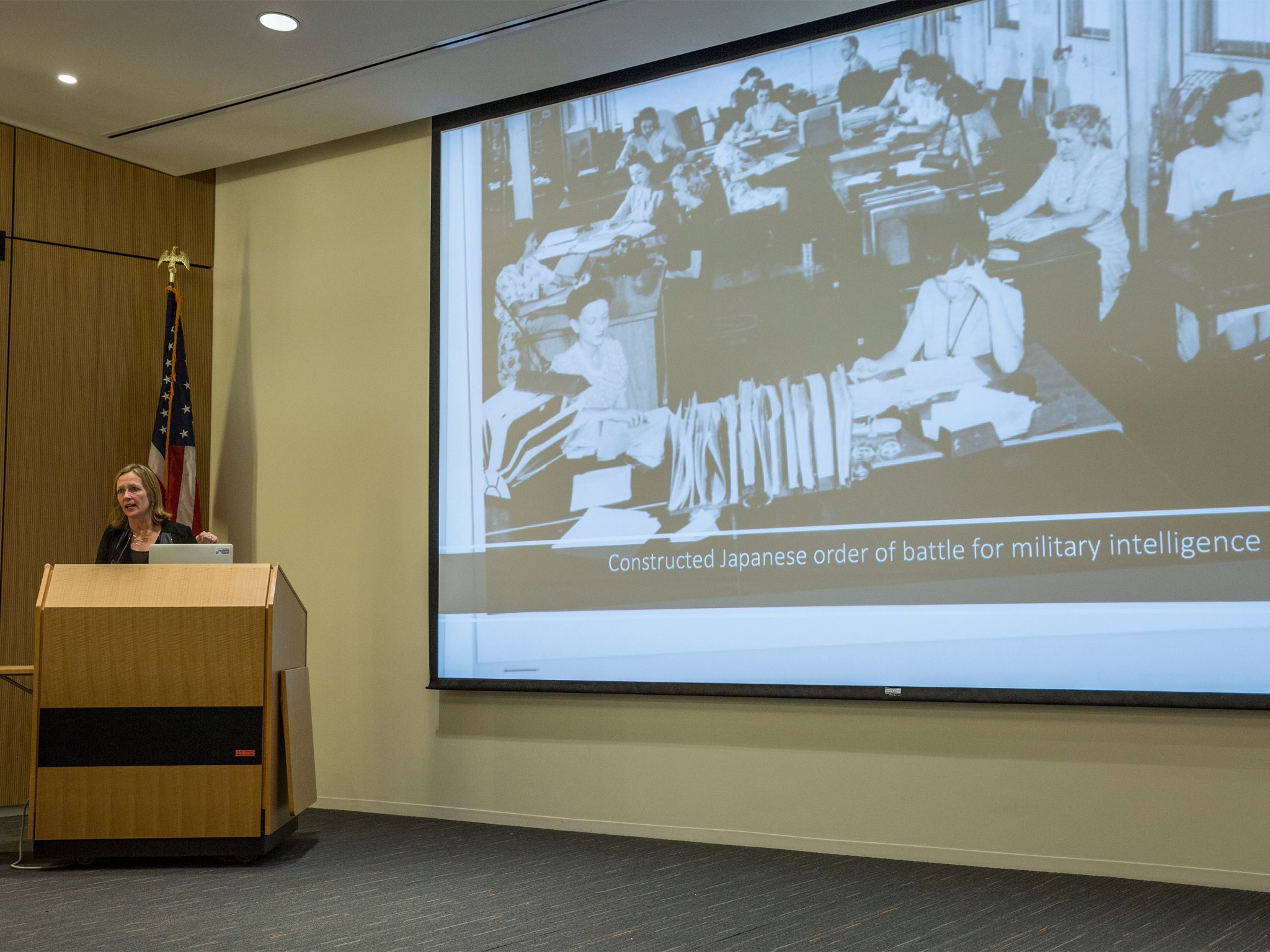Liza Mundy is in the business of telling stories. The journalist and bestselling author takes her subjects and research seriously – especially when it comes to stories that previously were tucked away in the dark.
One such story involved a select group of women during World War II that would shape the course of science and American society for decades to come.
“Historians had really overlooked it,” she said.
For Women’s History Month, Mundy spoke at NASA’s Langley Research Center in Hampton, Virginia, to discuss her book, “Code Girls: The Untold Story of the American Women Code Breakers of World War II.”
“NASA has its own proud history of women in computing and women making contributions to the agency and to American history, like the women of ‘Hidden Figures,’ at a time when they didn’t get credit for it at the time and are now finally getting credit for the work that they did,” Mundy said.
Codebreaking became a U.S. military initiative after the Pearl Harbor attacks on Dec. 7, 1941, which was a massive intelligence failure, Mundy said.
“The Navy had not seen it coming,” she said.
Once the U.S. entered the war the following day, military officials knew they needed to build a spy service from the ground up. Men, who were the usual targets of military recruitment at the time, were off fighting. With no other choice, the military recruited women, targeting those who were college graduates and schoolteachers.
“War opens up opportunities for marginalized populations,” Mundy said. “So ironically, war becomes a moment of inclusion because necessity and emergency dictates it.”
Back in those days, Mundy said, women were still expected to be housewives and mothers rather than professional workers.
“There were very few jobs that a woman could hope to occupy,” she said. “There were very few fields that were open to even the best educated women.”
But war, like necessity, is the mother of invention, so educated women from all over the country were recruited for a secret codebreaking initiative.
“This was an important watershed for women joining the military,” Mundy said.
During the interview process, they would be asked just two questions: do you like crossword puzzles and are you engaged to be married.
“If they answered yes to the first and no to the second, they would be invited to take this secret cryptanalysis training course,” Mundy said.
If a woman passed the course, she was sent with others to Washington, D.C., where they began work in June 1942. They all had to sign an oath of secrecy their very first day, with the penalty of being shot if they told anybody what they did due to the classified, top-secret work they were doing, Mundy said.
They also were told to tell people not involved in the codebreaking project that they were secretaries. And because they were women, everybody at the time believed that their work with was unimportant, Mundy said.
Each theater of war had its own codebreaking operation – the Army was responsible for Europe and the Navy had the Pacific.
“It was a mass of signals going out through the airwaves all over the world” via military and diplomatic channels, Mundy said. Those needed to be intercepted and broken by hand, as the Germans and Japanese had different methods of encoding transmissions. For example, the Japanese used five-digit code groups and the women had to figure out what the additive is using advanced math.
“The work was pretty repetitive and routine even though it was stressful and urgent,” Mundy said.
Codebreaking was not an effort targeted toward enemy military and governments. The private sectors that supported the Axis powers sent communications that needed translating as well. Those were left to black people who served in the military during World War II.
“That was very important work as well,” Mundy said, although, she added, they were segregated from their white counterparts.
After the war ended, many of the codebreaking women went back into the private sector, taking the roles that society at the time had pegged for them – but some didn’t and continued in the path of math and science, even if they didn’t received much support due to societal norms at the time. Of the codebreakers who stayed on the path, many would become pioneers in cyber security and computing. Some would even predate the creation of the National Security Agency.
“They definitely created a first generation of intelligence workers at the NSA and other agencies,” Mundy said.
Mundy hopes that with her book and similar ones that have uncovered the advances of science and technology due to women that debates about their place in those fields today can be put to rest.
“So much of our STEM innovation took place during World War II,” she said. “That’s when our first computers were developed.”
Eric Gillard
NASA Langley Research Center




























